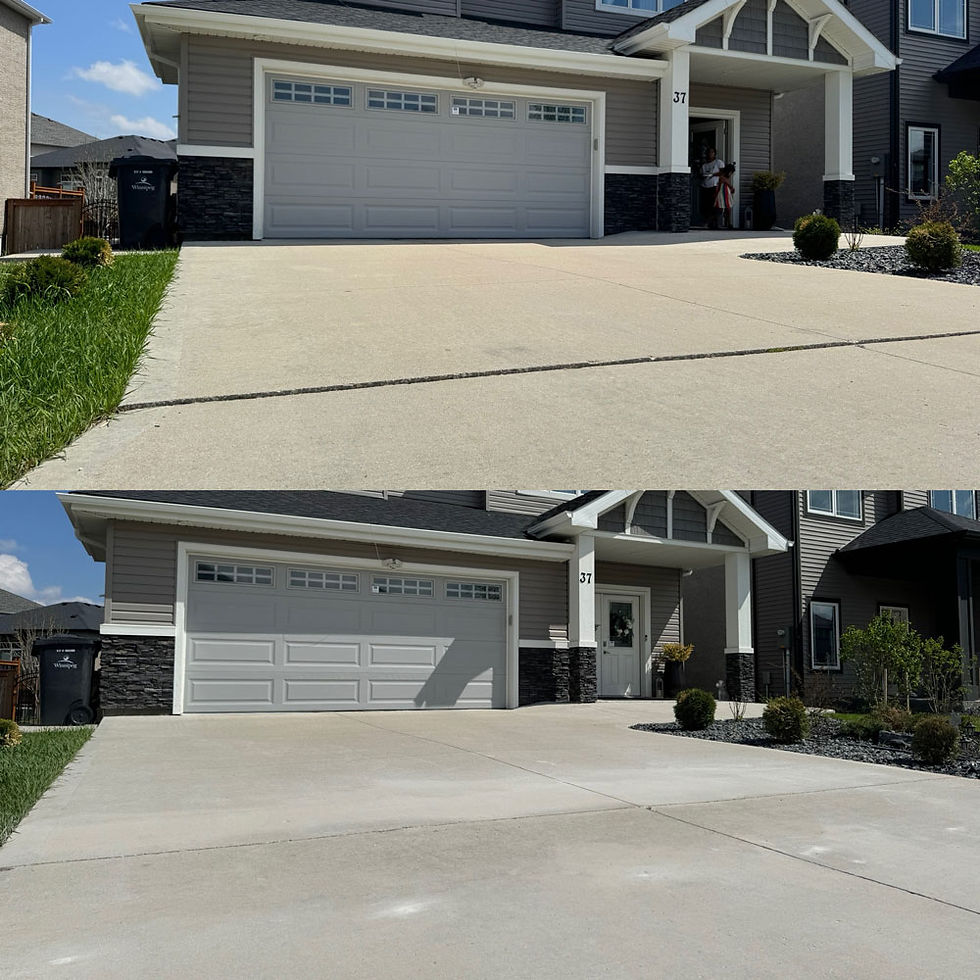Preventive Measures for Concrete Settling: Tips for Long-Term Stability
- Jordan Vermette
- Jan 15, 2024
- 2 min read
Updated: Jul 4, 2024
Are you tired of your driveway or garage floor concrete settling in? It is one of the most common urban problems. However, there are some solutions to this problem. More specifically, they are preventive measures that you can use for future safety. That means you will have minimal chances of settling concrete cracks inside or outside your home.
That said, let’s look at these concrete settling preventing tips in this detailed guide!
What Is Concrete Settling?
First, let’s start with the basics. Concrete settling is the cracks or gaps in your driveway, garage floor, or patio. It occurs when the soil below the concrete can not hold its weight anymore. That leads to distortion of the floor, causing problems like water infiltration, pests, and soil compaction.
Concrete settling isn’t something that just happens instantly. It is a process that takes time starting from the moment when the soil can not support concrete weight.

5 Tips for Concrete Settling Prevention
If you want long-term stability for concrete driveways, patios, and garage floors, the following 5 tips will help you effectively!
1. New Concrete
The solution many people opt for is getting new concrete poured. While it does work, you might be missing out on some important steps. For instance, it is not recommended to pour new concrete directly over the old one.
Instead, you will need to create a new base. This way, the concrete can sit more comfortably without settling again. It is the most straightforward method, but it may require a considerable cost.
2. Check Nearby Soil
Remember that seal gaps in concrete can expand to nearby areas. Hence, your first priority would be avoiding this additional problem.
How to do that? Well, you should start by inspecting if the surrounding concrete is also settling. If not, pack it effectively before the setting spreads.
3. Use Concrete Caulk
Concrete caulk is a proven solution for Manitoba concrete slab repairs costs. It helps eliminate the gaps and cracks in your soil. Furthermore, it can prevent the concrete from absorbing moisture.
4. Level the Concrete
When settling starts, you can notice it. The floor would not be equally leveled. Some parts would be closer to the ground than normal. That‘s the time to start taking action. Inspect nearby concrete and check whether the downspout is increasing the moisture levels on your floor.
5. Professional Assistance
Sometimes, the concrete settling prevention won’t work. Then, the only solution is to consult an expert service provider, like Boost Concrete Lifting. With years of field experience, a skilled team, and the appropriate high-end equipment, these professionals can repair your concrete cracks and gaps in no time. The best part is that you can discuss your problem, and they can craft customized solutions to help you!
Conclusion
Now, you know how to handle settling concrete cracks. These tips can help you, but only to some extent. If they don’t work, consult professional assistance immediately. Further delays can affect the nearby concrete, increasing your trouble!




